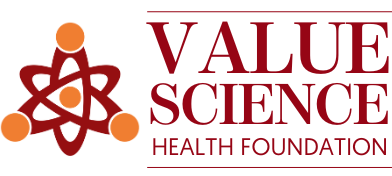Introduction
Skin cancer, particularly melanoma, presents a significant global health concern, with 57,000 deaths recorded in 2020. By 2040, an estimated 510,000 new cases and 96,000 deaths annually are projected. Melanoma incidence rates vary by region, with Oceania experiencing the highest rates. Non-melanoma skin cancers also impose substantial burdens on healthcare systems, contributing to elevated costs and treatment expenses. Therefore, understanding the economic benefits of prevention strategies is vital due to the escalating rates of skin cancer.
Understanding the Causes, Impacts, and Economic Implications
Skin cancers are intricate conditions influenced by genetic predispositions and environmental factors. They are primarily triggered by exposure to ultraviolet (UV) radiation from the sun or artificial sources like tanning beds. The carcinogenic nature of UV radiation underscores the importance of effective protective measures to prevent skin cancers. The COVID-19 pandemic has highlighted the necessity for strategic healthcare investments, emphasising the importance of enhanced preventive care to strengthen health system resilience. Despite limited allocations towards prevention activities, investing in safeguarding population health yields extensive benefits, extending beyond healthcare cost savings to broader societal advantages. Collins et al. evaluated several prevention interventions including real-world interventions, which provide observational evidence, to reduce UV exposure and prevent skin cancer.
Challenges and Opportunities in Skin Cancer Prevention
Promoting public health initiatives to mitigate UV exposure remains a cost-effective strategy, albeit challenging due to competing health priorities. Targeted prevention programmes can address health inequities, benefiting socioeconomically disadvantaged populations disproportionately affected by skin cancers.
Competing health priorities and limited resources make it difficult to allocate sufficient funds for skin cancer prevention. Socioeconomic disparities and behavioural resistance further complicate efforts to promote UV protection. Moreover, regulatory challenges and the emerging impact of climate change necessitate adaptive and robust prevention strategies.
Evaluating Cost-Effectiveness of Skin Cancer Prevention
Evaluating various skin cancer prevention interventions, from regulating indoor tanning to promoting sun safety behaviours, demonstrates substantial returns on investment, cost savings, and improved health outcomes.
For instance, a Danish study by Köster et al. projected that banning sunbed use for individuals under 18 years old would save society approximately €9 million over 30 years. Furthermore, implementing a complete ban on sunbeds was estimated to result in even greater savings, amounting to €129 million over the same period. These figures illustrate the potential long-term economic advantages of stringent sunbed regulations.
In the United States, two programme cost analyses provided insights into the financial implications of sun protection interventions in different settings. One study focused on employer-based interventions, calculating the cost of delivering sun protection measures at $174 per employee over two years. Another study examined the cost of implementing sun safety policies and education programmes across 77 primary schools in California, which amounted to $145,500. These interventions aimed to reduce UV exposure among employees and schoolchildren, thereby lowering the incidence of skin cancer.
Future Directions and Recommendations
As the evidence supports the cost-effectiveness of skin cancer prevention programmes, policymakers are encouraged to invest in these initiatives. Future research should focus on advanced methodologies, leveraging big data and machine learning to enhance decision-making in skin cancer prevention. Moreover, the impact of climate change on UV exposure and the need for increased sun protection should be investigated.
Conclusion
In conclusion, the collective evidence underscores the efficacy of preventive strategies in mitigating the burden of skin cancers, offering substantial health and economic benefits to societies worldwide. The economic benefits arise from avoided healthcare costs associated with treating skin cancer and the productivity gains from preventing illness and premature death. Prioritising skin cancer prevention initiatives not only saves healthcare resources but also safeguards public health, underscoring the critical importance of proactive measures in combating this prevalent malignancy.




